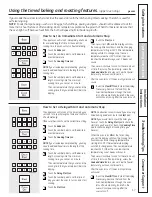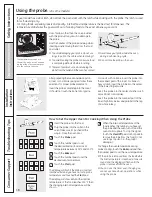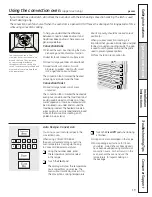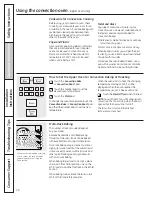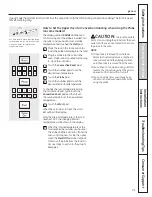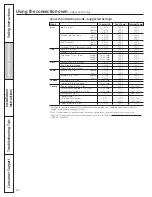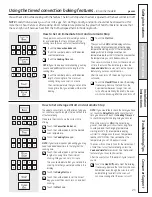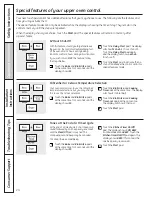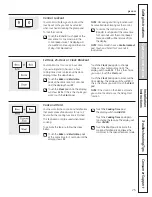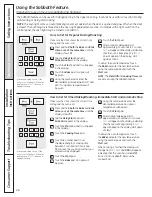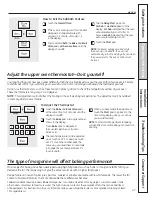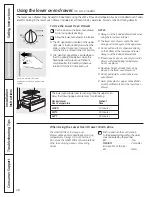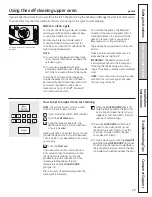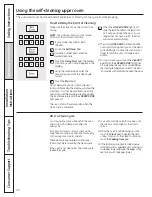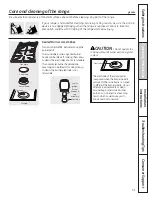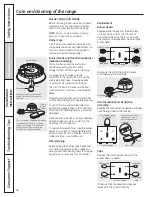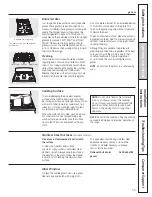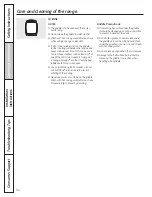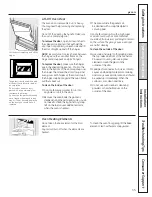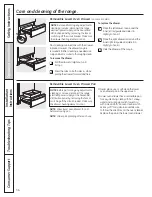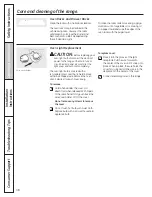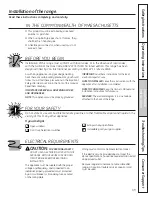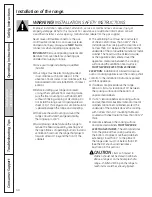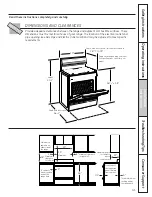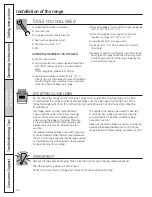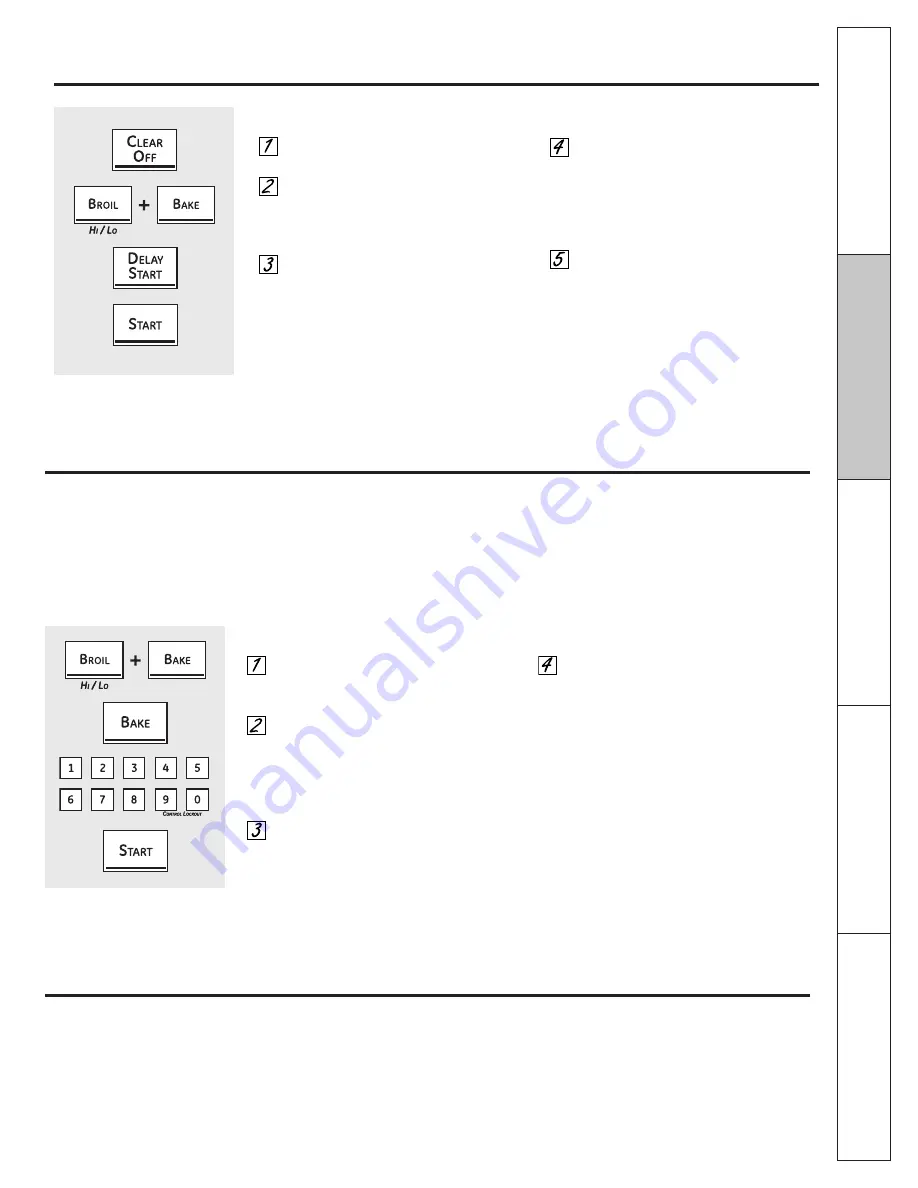
27
Consumer S
uppor
t
Operating Instructions
Safety Instructions
Installation
Instructions
Tr
oubleshooting Tips
How to Exit the Sabbath Feature
Touch the
Clear/Off
pad.
If the oven is cooking, wait for a random
delay period of approximately 30
seconds to 1 minute, until only
⊃
is
in the display.
Press and hold
both
the
Bake
and
Broil
Hi/Lo
pads,
at the same time
, until the
display shows
SF.
Tap the
Delay Start
pad until
12 shdn
or
no shdn
appears in the
display.
12 shdn
indicates that the oven
will automatically turn off after 12
hours.
no shdn
indicates that the oven
will not automatically turn off.
Touch the
Start
pad.
NOTE:
If a power outage occurred while
the oven was in Sabbath, the oven will
automatically turn off and stay off even when
the power returns. The oven control must
be reset.
ge.com
You may find that your new oven cooks differently than the one it replaced. Use your new oven for a few weeks to become
more familiar with it. If you still think your new oven is too hot or too cold, you can adjust the thermostat yourself.
Do not use thermometers, such as those found in grocery stores, to check the temperature setting of your oven.
These thermometers may vary 20–40 degrees.
NOTE:
This adjustment will not affect the broiling or the self-cleaning temperatures. The adjustment will be retained
in memory after a power failure.
To Adjust the Thermostat
Touch the
Bake
and
Broil Hi/Lo
pads
at the same time for 3 seconds until the
display shows
SF.
Touch the
Bake
pad. A two digit number
shows in the display.
Touch
Bake
once to decrease (-)
the oven temperature, or twice to
increase (+).
The oven temperature can be adjusted
up as much as 35°F. or down as much
as 35°F. Touch the number pads the
same way you read them. For example,
to change the oven temperature 15°F,
touch
1
and
5.
When you have made the adjustment,
touch the
Start
pad to go back to the
time of day display. Use your oven as
you would normally.
NOTE:
The thermostat adjustment for Baking
will also affect Convection Baking or Convection
Roasting.
Most recipes for baking have been developed using high fat products such as butter or margarine (80% fat). If you
decrease the fat, the recipe may not give the same results as with a higher fat product.
Recipe failure can result if cakes, pies, pastries, cookies or candies are made with low fat spreads. The lower the fat
content of a spread product, the more noticeable these differences become.
Federal standards require products labeled “margarine” to contain at least 80% fat by weight. Low fat spreads, on the
other hand, contain less fat and more water. The high moisture content of these spreads affects the texture and flavor
of baked goods. For best results with your old favorite recipes, use margarine, butter or stick spreads containing at least
70% vegetable oil.
Adjust the upper oven thermostat—Do it yourself!
The type of margarine will affect baking performance!





